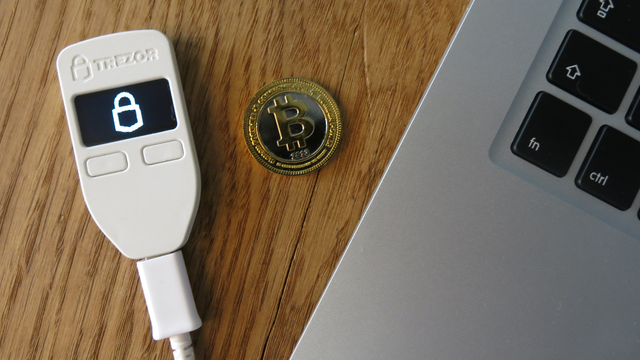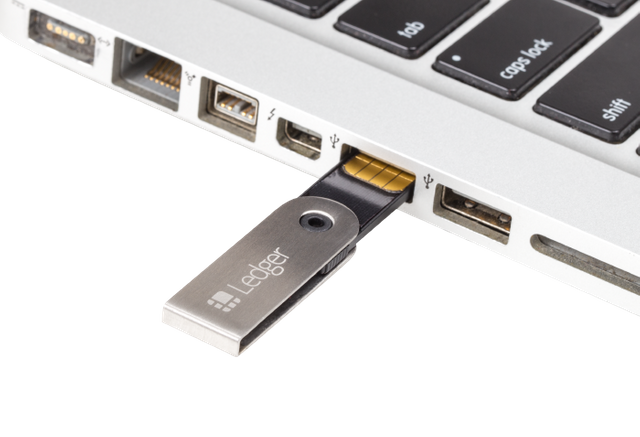Hardware Bitcoin Wallets: A Comparison
Nowadays many people use web-based wallets and paper wallets for their convenient usage, but what happened to security? The hardware wallet is generally what you'll want, so today, we'll compare some common Bitcoin hardware wallets (Trezor, Ledger Nano), and show you the pros and cons of each.

Trezor
Trezor was one of the first hardware wallets and is also one of the most secure. The wallet was designed for storing large amounts of bitcoin securely, and therefore it is not meant for daily usage. Keeping that in mind, let’s take a look at the Trezor.

Trezor Hardware Wallet
The wallet features a strongly-built exterior, about as large as a USB drive. Trezor is powered by the micro-USB port on the bottom and is powered by a relatively weak Cortex ARM chip. Keeping in mind that a hardware wallet isn’t exactly the most resource-consuming thing a CPU needs to do, it’s perfect for the device.
The device itself is truly secure; it uses entropy to generate a random seed and needs a plugin to access it. The plugin requires you to enter a PIN number displayed only on the Trezor to log into the device. The PIN changes each time the device is used.
This means that a hacker could only get into the wallet if they had taken the physical wallet, which is difficult to do. The wallet will require you to write down a 24-word seed that you should write down; it is the only way to recover the wallet in case someone steals it.
Like a traditional hardware wallet, it requires you to confirm each transaction via clicking a button on the Trezor, and the wallet can only be accessed on the web wallet provided via the plugin. Note that it requires you to log in each time. While not incredibly time-consuming, it does take a fair bit of time to send transactions; security is what they aim for here.
Pros
Well-Built
Very Secure
Cons
Not meant for daily usage
Requires USB to be used
Overall, the Trezor is a very secure hardware wallet that does what it’s supposed to do if you need a long-term storage solution for your Bitcoin.
Ledger Nano
The Ledger Nano is a very convenient hardware wallet using relatively safe methods of transfer. While not the most secure, the cost of the Ledger is especially cheap and reliable; it uses EEPROM memory that is usually found in electronics requiring small amounts of data to be stored, with lots of that data being erased and reprogrammed.

Ledger Nano Hardware Wallet
The device needs to be set up on a completely secure computer. If you ever need to recover the wallet, the recovery code sheet features a QR that can be used to create another copy of the 2FA card they included with your Ledger. The 2FA card keeps costs down greatly, as it provides secure access with very low costs.
To set up the wallet, you’ll need to install a Chrome addon, just like the Trezor. The seed should not be put onto your computer or anybody else’s computer, it should be written down as it is the only way you can restore the wallet in the event of loss or hardware failure.
You will need the card for doing nearly anything on the Ledger- the wallet will give you a task to complete, and you’ll need the card to do so. Just like any other wallet you’d use, the interface is nearly identical, except for the part where you need to complete the validation process. None of this should take very long.
Pros
Reliable Build
High Quality
Cheap
Can be used for daily use
Cons
Needs a secure computer to start
Needs Chrome browser to use
While no wallet is safe in the Bitcoin world, hardware wallets provide security and reliability that will help keep hackers at bay. The web wallet and paper wallet is simply not a good choice for storing large amounts of Bitcoin, and hardware wallets help store them.
While they offer great security, hardware wallets are not meant for daily use and it will be very inconvenient to do so. We recommend storing small amounts of Bitcoin on a ‘Hot Wallet’ that can be easily accessed- Blockchain, or any other light wallet, and keeping the majority of your bitcoin on a secure paper or hardware wallet for security. That’s all of today, we hope we’ve helped you pick a reliable Bitcoin hardware wallet!
Images via: Pexels, Trezor, Ledger
Personally, I'm looking to buy a trezor or Keep Key, but cant decide which one! Its difficult man
The KeepKey is a really nice bit of kit, like a modern looking trezor